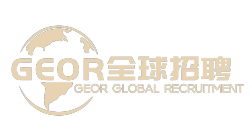Overseas copywriting marketing: from cultural adaptation to transformation-driven practical methodology
Overseas copywriting marketing: from cultural adaptation to transformation-driven practical methodology
In the global competition, overseas copywriting marketing has become the core weapon for brands to break cultural barriers and establish emotional connections. From an advertising slogan to a product description, the power of words is not only related to the communication effect, but also directly affects the purchase decision of consumers. The following four dimensions: cultural insight, content strategy, channel adaptation and effect verification, to analyze the underlying logic and practical skills of overseas copywriting marketing.
Cultural gene decoding: breaking the cognitive misunderstanding of language surface layer
1. Values and taboo avoidance
The acceptance of metaphor, humor and color varies significantly from culture to culture. A well-known sports brand used the "cow" element as a visual symbol in the Indian market, but it was boycotted by local religious taboos. However, a cosmetics brand replaced the expression "sexy charm" with "pearl luster" in the Saudi market, and its sales increased by more than 30%.
2. Expression logic reconstruction
European and American copywriting focuses on data support and logical argumentation, and East Asian markets prefer emotional resonance and scenario description. A technology enterprise in the Japanese market will be product parameters list copy adjusted to "early morning coffee time smooth experience" scene expression, click-through rate increased by 45%.
3. Use of localized slang
Moderate integration into target market buzzwords can enhance affinity. A game company uses "Vai, vai, vai!" in the Brazilian market!" (Come on) and other fans' cheering words are used as the slogan of the activity, and the player's participation is doubled. However, it is necessary to avoid excessive use leading to brand tonality ambiguity.
Content Policy Matrix: Building Multidimensional Communication Contacts
1. Brand Story Localization
Translate global brand narratives into localized language. An international chain restaurant brand in the Mexican market stressed the "three generations of family kitchen" concept, rather than a unified "global delicious" slogan, single store traffic increased by 20%.
2. Scenario-based presentation of pain points
Design differentiated content for consumer pain points in different markets. A smart home brand highlights the data comparison of "30% energy saving" in the European market, while in the Southeast Asian market it emphasizes the solution of "dealing with wet weather", with a conversion rate difference of 25%.
3. Social media content layering
- hard broad category :Instagram suitable for visual product display, Twitter need short and powerful information points, TikTok needs to combine popular music with challenges.
- soft content :LinkedIn can publish industry insight white papers. Facebook groups are suitable for user research and Pinterest inspiration for home products.
Channel adaptation rule: matching from text carrier to propagation logic
1. search engine optimization (SEO)
- keyword localization : use the real search terms of users in the target market. for example, the German market needs to distinguish between "Kaufen" (purchase) and "Bestellen" (order) usage scenarios.
- long tail word strategy : according to the design content of segmentation requirements, a B2B enterprise obtains accurate traffic through long tail words such as "German industrial robot maintenance service", and the inquiry cost is reduced by 60%.
2. e-commerce platform copy
- title formula : brand word + core selling point + scenario description (e.g. "[brand name] wireless headset | sports waterproof | marathon enthusiasts preferred").
- details page logic : from pain points → function demonstration → user testimony → promotion guidance, a household brand has improved its conversion rate by 35% through optimizing details page logic in Amazon.
3. advertising copy
- information flow advertising : attention should be paid in the first 3 seconds. an education brand starts with the promise of "mastering basic Spanish for 3 months" in the Facebook, click-through rate exceeds the industry average.
- search advertisement : highlighting the advantages of differentiation, a logistics enterprise emphasized "24-hour customs clearance service in the middle east" in Google Ads, and the inquiry volume increased by 40%.
Effect verification closed loop: data-driven continuous optimization
1. multi-dimensional indicator monitoring
- basic indicators : reading volume, sharing rate and completion rate (email marketing should pay attention to).
- conversion metrics : click rate, form submission rate, and additional purchase rate.
- brand metrics : search index, amount of social media topics, amount of user-generated content (UGC).
2. A/B test practice
- variable design : title wording, CTA button color, typesetting structure, emoji use or not.
- sample size requirement : a single set of tests covers at least 1000 exposures. an enterprise found through tests that the conversion rate of red CTA button in European and American markets is 18% higher than that of blue.
3. User feedback loop
- explicit feedback : comments from the comment area and high-frequency customer service inquiries.
- implicit feedback : pages with high jump rate and unfinished email content. An enterprise optimized the information density of the opening paragraph by analyzing the mail that users did not read, and the opening rate increased by 25%.
The essence of overseas copywriting marketing is the art of "cultural translation" and "demand resonance. Enterprises need to establish a "localized content center" to achieve a closed loop from inspiration creation to effect verification through the collaboration of cultural experts, marketing teams, and data personnel. For practitioners, mastering cross-cultural research ability, data-driven thinking and rapid iterative methodology will be the core competitiveness to cope with global competition. In the future, with the popularity of AI-generated content, how to balance efficiency and creativity, technology and humanism will become a new proposition in the field of copywriting marketing.
